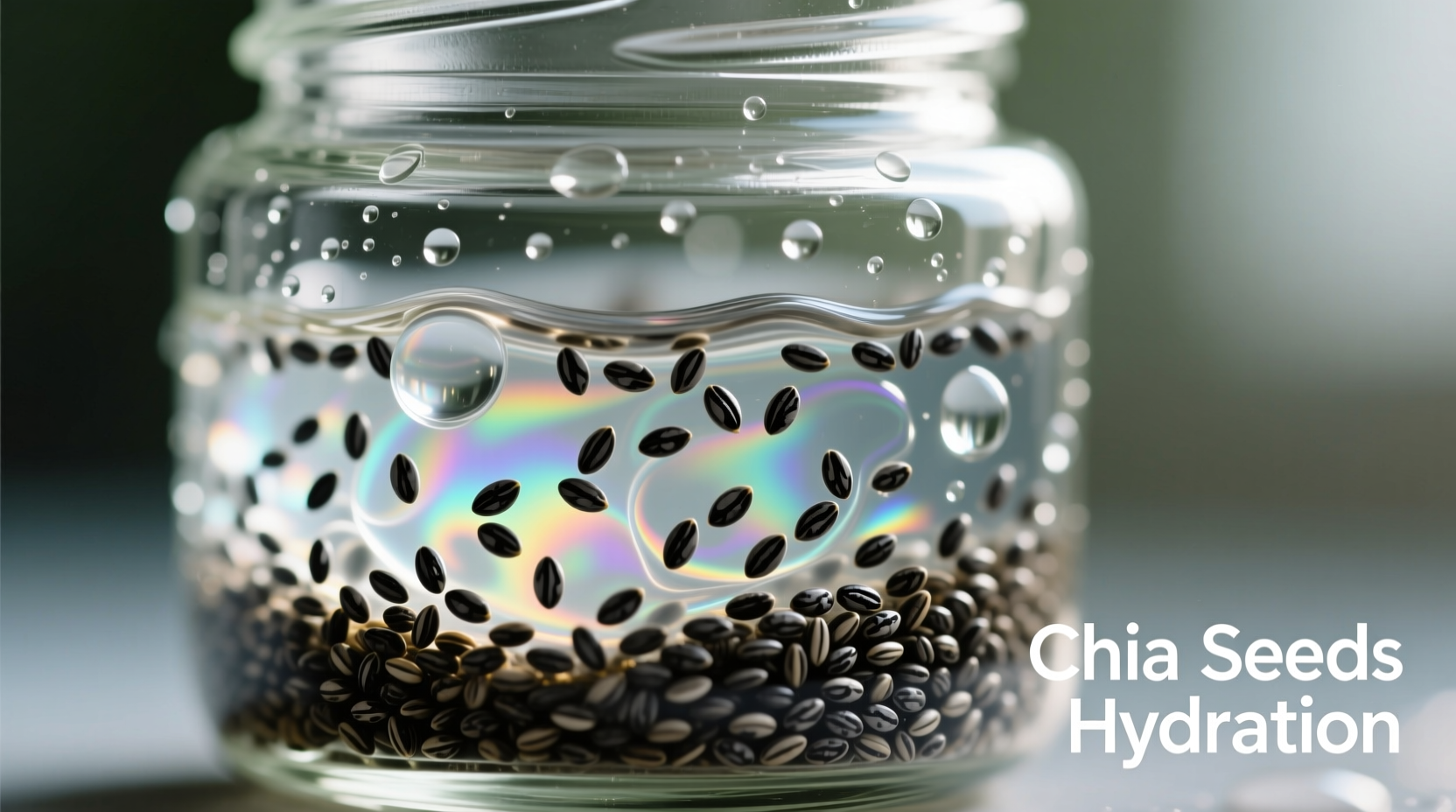Chia seeds have earned their superfood status with impressive nutritional benefits and remarkable culinary versatility. When prepared correctly, these tiny seeds can thicken sauces, replace eggs in baking, create creamy puddings, and add nutritional boosts to everyday meals without altering flavors significantly. The key to successful chia cooking lies in understanding their unique hydration properties and proper preparation techniques.
Understanding Chia Seeds' Culinary Properties
Before diving into recipes, it's essential to understand what makes chia seeds behave uniquely in cooking. When exposed to liquid, chia seeds absorb up to 12 times their weight, forming a gel-like coating through their soluble fiber content. This property makes them invaluable for texture modification in various dishes.
| Preparation Method | Hydration Ratio | Best Used For | Texture Result |
|---|---|---|---|
| Whole seeds, dry | N/A | Salad toppings, bread coatings | Crunchy, nutty texture |
| Whole seeds, soaked | 1:9 seed to liquid | Puddings, breakfast bowls | Creamy with slight seed texture |
| Ground seeds | 1:4 seed to liquid | Baking, smoothies | Smooth, no visible seeds |
| Chia gel | 1:6 seed to water | Egg replacement, sauces | Clear, viscous gel |
This comparison shows why proper preparation matters. According to the USDA FoodData Central database, chia seeds contain approximately 34 grams of fiber per 100 grams, explaining their exceptional water-absorbing capacity. Using the wrong ratio can lead to dishes that are either unpleasantly slimy or disappointingly dry.
Mastering Basic Chia Preparation Techniques
Creating Perfect Chia Gel
Chia gel serves as the foundation for many chia-based recipes and makes an excellent egg substitute. Combine 1 tablespoon of chia seeds with 3 tablespoons of water. Stir well and let sit for 15-20 minutes, stirring occasionally until thick and gelatinous. This creates enough gel to replace one standard egg in baking recipes.
Avoiding Common Texture Mistakes
Many home cooks encounter unpleasantly slimy textures because they don't understand chia's hydration timeline. Research from the Journal of Food Science shows chia seeds reach maximum hydration within 30 minutes at room temperature, but the texture continues to improve when refrigerated for 2-4 hours. For puddings and desserts, always allow at least 2 hours of chilling time for optimal texture development.

Breakfast Applications That Shine
Flavorful Chia Pudding Variations
Create a basic chia pudding by combining 3 tablespoons of chia seeds with 1 cup of your preferred milk (dairy or plant-based), 1-2 teaspoons of sweetener, and flavorings. For tropical flavors, add 1/4 cup mango puree and top with toasted coconut. For chocolate enthusiasts, mix in 1 tablespoon cocoa powder and a pinch of cinnamon before chilling.
Professional chefs recommend adding vanilla extract or citrus zest to enhance flavor perception without increasing sugar content. The naturally occurring antioxidants in chia seeds help preserve freshness, making these puddings perfect for meal prep.
Smoothie Boosters and Oatmeal Enhancers
For smoothies, add 1 tablespoon of ground chia seeds during blending to prevent separation and add thickness. In oatmeal, stir in 2 teaspoons of pre-soaked chia seeds during the last minute of cooking for added nutrition without altering texture significantly. These simple additions boost fiber content by approximately 5 grams per serving while improving satiety.
Baking with Chia Seeds: Professional Techniques
Effective Egg Replacement
When substituting eggs in baking, use 1 tablespoon chia gel (1 tsp seeds + 3 tbsp water) per egg. This works particularly well in dense baked goods like muffins, brownies, and quick breads. For lighter cakes, replace only half the eggs with chia gel to maintain optimal rise and texture.
Moisture Retention Secrets
Professional bakers add 1-2 tablespoons of whole chia seeds to bread and muffin recipes to improve moisture retention without adding fat. The seeds' hydrophilic properties help baked goods stay fresher longer. For gluten-free baking, chia seeds provide essential binding properties that mimic gluten's function.
Savory Applications You'll Love
Thickening Sauces and Soups
Replace cornstarch or flour with chia gel for a nutritionally superior thickener. For every 1 tablespoon of cornstarch, use 2 tablespoons of chia gel. Add the gel toward the end of cooking to preserve its thickening properties. This technique works exceptionally well for dairy-free sauces and vegan gravies.
Creative Coating Solutions
Create a nutritious alternative to breadcrumbs by grinding chia seeds with oats or nuts. This coating works beautifully for baked chicken tenders or fish fillets, providing a crispy exterior while adding omega-3 fatty acids. For vegetarian options, use this mixture to coat tofu or eggplant slices before baking.
Storage Guidelines for Chia-Enhanced Dishes
Properly stored chia pudding and other chia-based dishes maintain freshness for 4-5 days in the refrigerator. The FDA recommends storing chia gel for no longer than 7 days due to potential bacterial growth in the hydrated environment. Always use airtight containers and check for any off odors before consuming.
Troubleshooting Common Chia Cooking Challenges
Problem: Slimy texture in puddings
Solution: Reduce hydration ratio to 1:8 (seed to liquid) and ensure thorough initial mixing. Whisk vigorously for 2 minutes before chilling to distribute seeds evenly.
Problem: Baked goods too dense
Solution: Use ground chia seeds instead of whole, and limit to 2 tablespoons per recipe. For cakes, replace only half the flour with chia-enhanced flour mixture.
Problem: Separation in smoothies
Solution: Always use pre-made chia gel rather than adding dry seeds directly. Blend for at least 45 seconds after adding the gel.
Maximizing Nutritional Benefits
While chia seeds contain valuable omega-3 fatty acids, their absorption improves significantly when paired with healthy fats. Add a teaspoon of almond butter or a few chopped walnuts to your chia pudding to enhance nutrient uptake. The Academy of Nutrition and Dietetics confirms that fat-soluble nutrients in chia seeds become more bioavailable when consumed with dietary fats.











 浙公网安备
33010002000092号
浙公网安备
33010002000092号 浙B2-20120091-4
浙B2-20120091-4